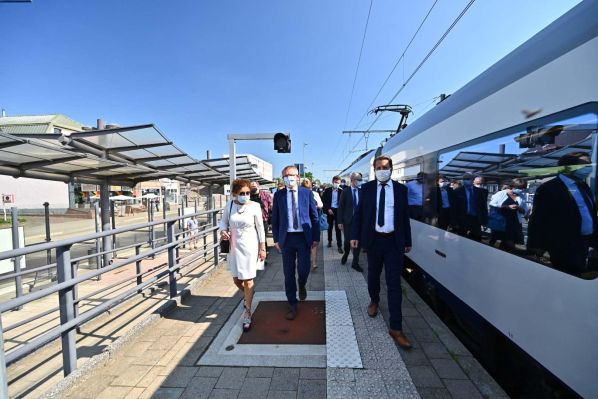THE first electric train operated on Belgium’s Mol - Hamont line on June 10 ahead of the introduction of electric service four days later.
Electrification of the 33km line began in autumn 2018. Three new traction substations have been built, which convert high voltage into usable voltage (3kV dc) for trains. Infrabel also completed track upgrades including installing new points and 115m of extra track.
The electrification project cost €30.9m with 40% provided by the European Commission (EC). Around 90% of Belgium’s railway, or 5907km, is now electrified.
From June 14, 40% of IC trains running between Antwerp Central and Hamont will operate with electric double-decker trains, each with more than 800 seats meaning around a 10% capacity increase compared with the current diesel trains.
The line was officially opened by Mr Georges Gilkinet, federal minister for mobility, Ms Lydia Peeters, Flemish minister for mobility and public works, Ms Sophie Dutordoir, CEO of Belgian National Railways (SNCB) Mr Benoît Gilson, CEO of Infrabel Mr Christian Faure, head of department CEF transport, CINEA, European Commission , andthe mayors van Mol, Lommel, Pelt and Hamont-Achel.
Meanwhile, electrification of 38km of railway between Mol and Hasselt continues. This project started more than two years ago and completion is planned for the end of 2022 . The work will result in electrification of all passenger lines that make up the Limburg railway network.
Infrabel is also electrifying the freight-only Genk Goods - Bilzen line, with work getting underway last month and set to conclude at the end of March 2022.

